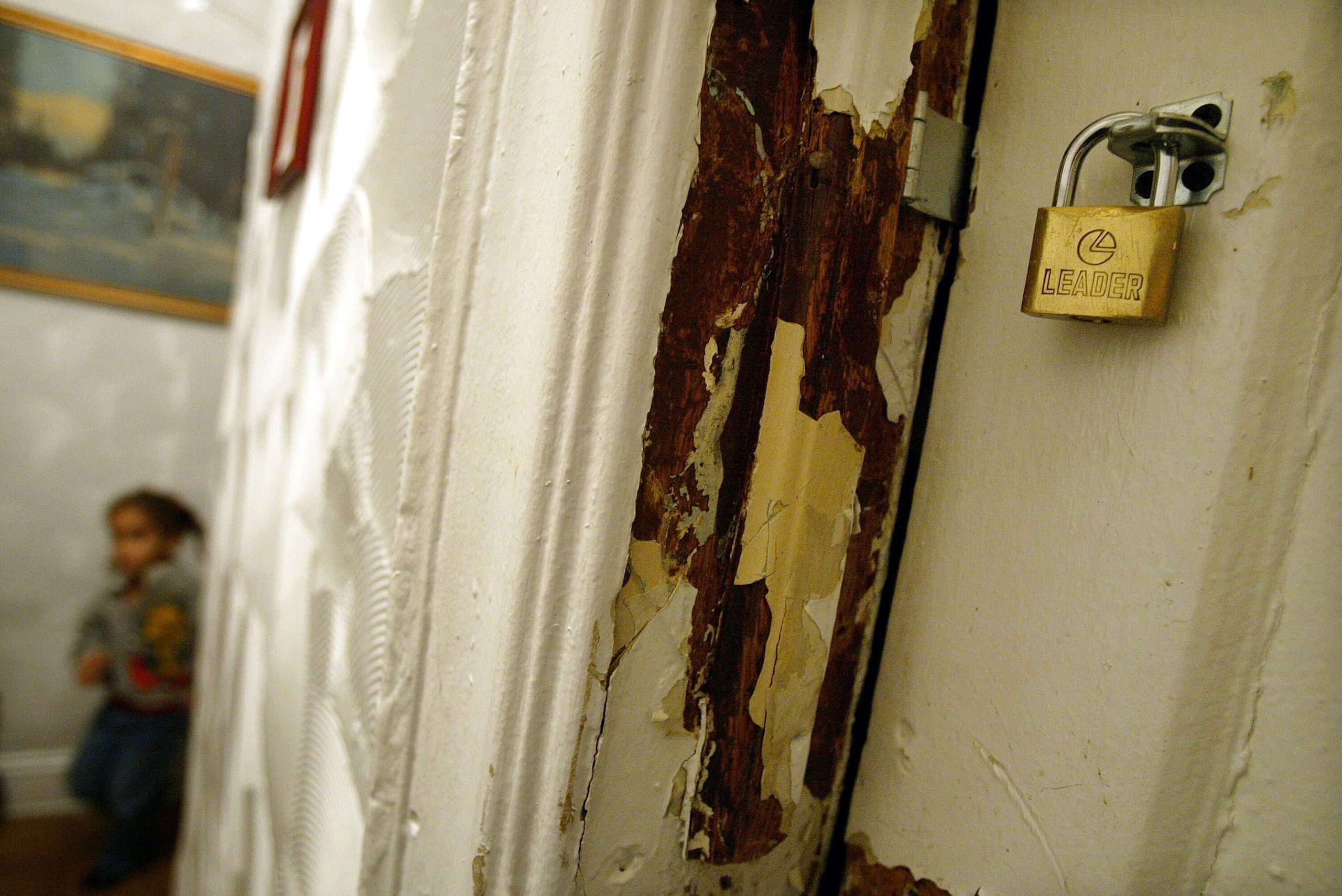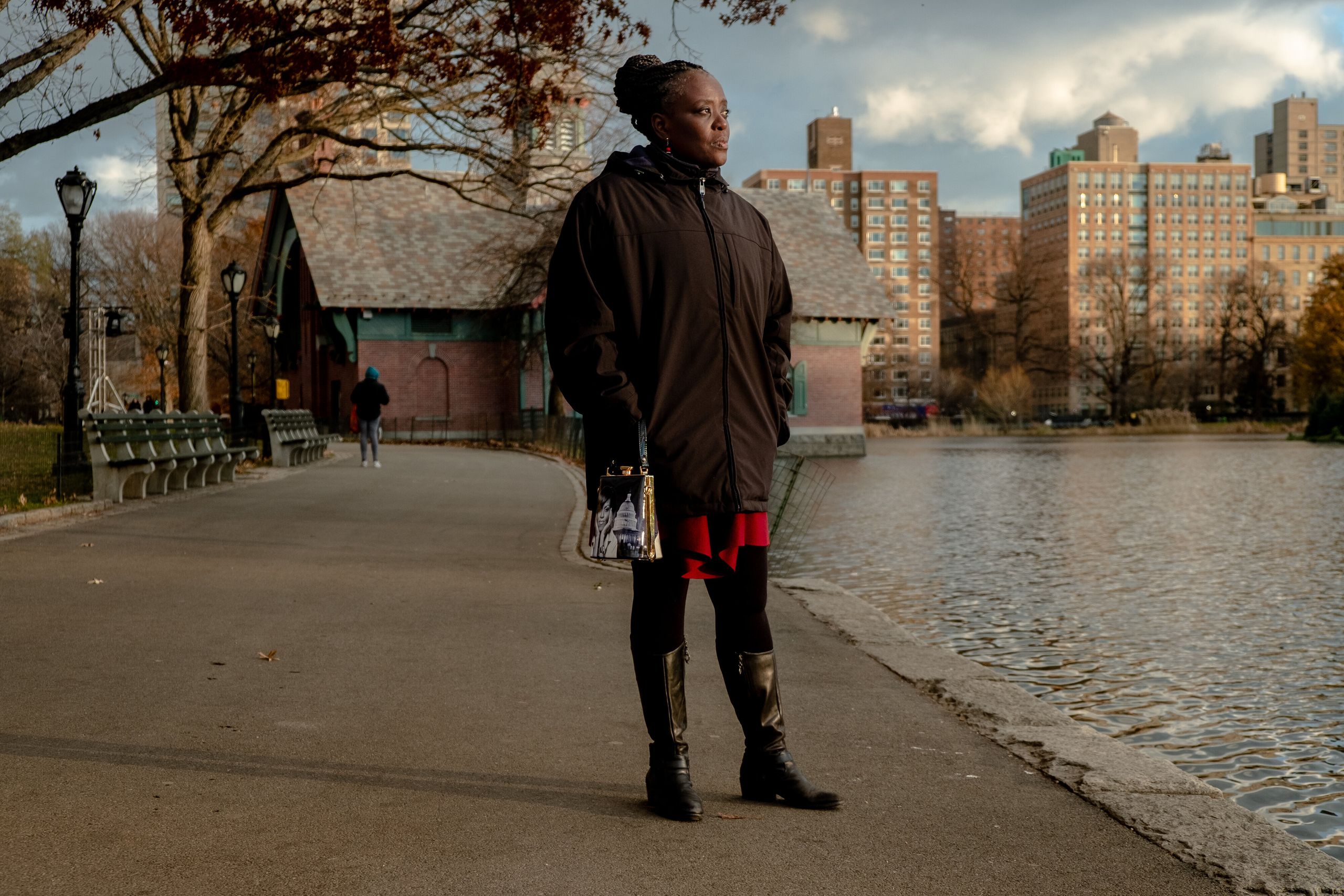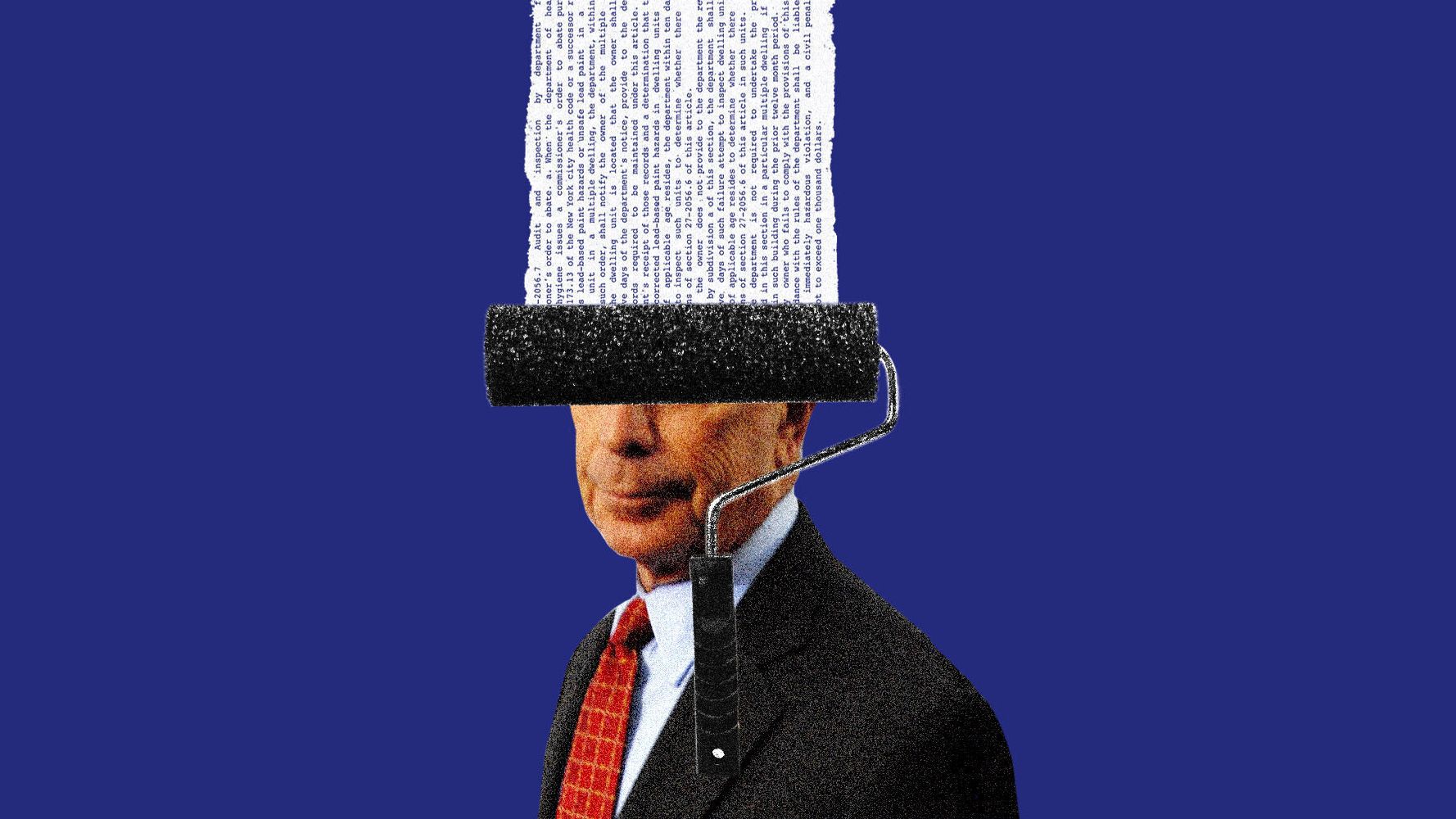[ad_1]
When Cordell Cleare went to meet the mayor of New York City for the first time in winter 2003, she expected to be disappointed.
The Harlem mother had spent a decade crusading against landlords whose neglect of lead paint hazards had poisoned thousands of kids, including her youngest son. Michael Bloomberg, the billionaire who was then New York City’s mayor and is now a candidate for president, had opposed the efforts to enforce cleanup. He argued that the city’s existing laws were working just fine and that any new rules risked hurting the real estate industry.
But Cleare kept pressing, and by late 2003, she was working as an aide to City Councilman Bill Perkins as he marshaled one of the most progressive lead paint bills in the country. On that sunny winter day, she made a final plea to Bloomberg in his Lower Manhattan office to sign the bill into law.
First, Bloomberg made her wait. A mayoral aide, who came out to delay the meeting for the fourth time, told Cleare that Bloomberg only wanted to meet with Perkins. Cleare insisted on joining, and they were both ultimately ushered into a conference room for a meeting that lasted under 20 minutes.

As Cleare appealed to the first-term mayor about the lead paint dust causing an epidemic of brain damage among mostly Black and Latino children, Bloomberg interrupted her.
“He said, ‘Yeah, well, I just don’t understand certain behaviors in certain populations,’” Cleare recalled on a recent morning over a cup of tea at a Dunkin’ Donuts on 116th Street. “Then he told me his foundation was trying to find out why people take drugs.”
She understood the mayor’s insinuation: Irresponsible minority parents, not landlords, were the ones to blame for lead-tainted paint dust coating the floors and surfaces of their poorly maintained apartments.
“I took it as an insult,” Cleare said. “It was so mind-blowing to me that I honestly can’t tell you how I came back. Everything just stopped right there, and I said, ‘I’m talking about lead-poisoned kids.’”
It was so mind-blowing to me that I honestly can’t tell you how I came back.
Cordell Cleare, New York City activist
The Bloomberg campaign did not respond to an interview request and declined to comment on activists’ recollections of the mayor’s comments. But a spokesperson directed HuffPost to radio appearances Bloomberg made at the time, in which the mayor said the existing “lead abatement program… has been phenomenally successful.”
“It’s not clear, incidentally, where the remaining cases come from,” Bloomberg said in a Nov. 7, 2003, interview on WABC radio. “It could be the child gets lead poisoning from chewing on a windowsill with old lead-based paint.”
But Bloomberg’s remark came straight out of a racist industry playbook dating back decades, lead experts say. Bloomberg’s critics say it also highlights a gap between the wealthy financier’s reputation as an environmental philanthropist and his record as a policymaker.
It’s a gulf that could dog Bloomberg as he makes a bid for the 2020 Democratic presidential nomination. In a primary where polls show the climate crisis and environmental issues are top concerns for Democratic voters, Bloomberg, 77, is pitching himself as a clear-eyed problem-solver whose vast personal fortune insulates him from the pressures of fundraising from deep-pocketed polluters and allows him to make sober decisions that benefit the masses.
Bloomberg’s record also threatens to alienate Black voters ― a critical constituency to securing the Democratic presidential nomination ― who are already skeptical of the mayor for overseeing stop-and-frisk policing, which unconstitutionally amounts to racial discrimination, a federal judge ruled in 2013.
“It is illustrative of Mike Bloomberg at his worst,” said Pete Sikora, an environmental campaigner who now advises the progressive nonprofit New York Communities for Change.
A Decades-Long Fight
The lead industry started attacking victims of childhood lead poisoning more than half a century ago. In 1955, Manfred Bowditch, the director of health and safety for the Lead Industries Association, a trade group, described childhood lead poisoning as primarily a “slum problem” for which “the only real remedy lies in educating a relatively uneducable category of parents,” according to research cited in a book by Mona Hanna-Attisha, the doctor in Flint, Michigan, who identified the crisis in her city four years ago.
A year later, Bowditch made even more openly racist remarks in a letter to an Interior Department official: “The basic solution is to get rid of our slums, but even Uncle Sam can’t seem to swing that one. Next in importance is to educate the parents, but most of the cases are in Negro and Puerto Rican families, and how does one tackle that job?”
In the 1960s, the Young Lords, a Latino political movement, made lead poisoning a central plank of its civil rights campaign, and U.S. Rep. William Ryan, a Democrat representing the Upper West Side and Harlem, championed legislation in the early 1970s to ban lead paint in public housing. In 1978, the federal government prohibited lead paint altogether.
In New York City, cleanup remained a battle for decades. The city enacted rules in the early 1980s to require inspections, but they were rarely enforced, and regulators routinely took credit for declines in contamination that were actually attributable to the federal bans’ curtailment of new lead paint.
“The crisis in the city has always been: Do we explain this, go out and say we have to remedy it and take on these corporate bodies? Or do we alternatively say it’s somehow the patients’ fault and the parents’ fault?” said David Rosner, a Columbia University historian and author of the “Lead Wars.” “By and large, Bloomberg took the latter course.”
Lead contamination is notoriously difficult to chart over time due to the shifting federal guidelines for what constitutes a safe blood lead level. In the early 1970s, for example, it was considered unsafe to have 60 micrograms of lead per deciliter of blood. By the end of the decade, that figure fell to 40 micrograms per deciliter. By 1993, it dropped down to 20, then to 15 in 2004. Today, doctors say there is no safe blood lead level, but consider 5 micrograms per deciliter to be the threshold for safety concerns in children.
The changing guidelines warp statistics. In 1970, New York City officials detected just 2,649 children and teenagers under the age of 18 with blood lead levels over 60 micrograms per deciliter. Yet decades after lead paint was banned, city figures tracking a blood lead level of 10 micrograms per deciliter showed a total nearly tenfold larger ― in a much smaller age range. In 1995, 22,024 children between the ages of six months and six years tested at blood levels of 10 micrograms per deciliter. By 2000, that figure fell to 7,657 kids.
The figure went down “because we stopped making lead paint and stopped using it,” said Matthew Chachère, a staff attorney at the nonprofit Northern Manhattan Improvement Corporation who represented people whose children were poisoned. “The question is, had we gotten it down to zero children at any elevated blood level? And the answer was no.”

New York City enacted a law in 1982 requiring landlords to clean up some lead paint. But, as the Gotham Gazette reported in the early 2000s, the statute was “criticized by virtually every expert in the field as far too constrained, limiting landlord responsibilities only to peeling paint, and leaving out lead dust and the conditions that cause lead dust.”
When the old lead-based paint cracked, dust would snow down on floors and surfaces. Babies, who crawl and put everything in their mouths, suffered the worst consequences as the lead accumulated in their blood and caused life-long learning disabilities.
By the time Bloomberg took office in 2002, a coalition of environmentalists and parents was rallying behind new legislation requiring landlords to inspect and fix lead paint hazards in any apartment with a child. If they didn’t, the city would be required to make the repairs and charge the building owner for the work.
“The key thing was the specificity,” Chachère said. “It spelled it out both in terms of clear statements that owners were under a continuous obligation to make sure there was no conditions in a dwelling that would cause a child to be poisoned by lead.”
Cleare was one of the legislation’s leading advocates. In 1992, just 11 days after her youngest son was born, a fire in the Harlem apartment above hers damaged her unit. Her landlord refused to fix the water damage, and she took him to court. But two years after the blaze, her son ― whose name Cleare requested HuffPost not use to protect him from the stigma of his resulting learning disabilities ― started to exhibit alarming behaviors. He backslid on language and potty-training skills. A doctor took a blood sample for testing.
Cleare’s son tested around 35 micrograms per deciliter, she said. Fearful of the problem getting worse, she moved into a house in the Bronx that provided shelter to families struggling with lead exposure. It was safer, but it was far from the neighbors Cleare relied on to help care for her three children. She spent two years there before the landlord finally repaired all the potential sources of lead dust in her apartment back in Harlem.
By then, Cleare had started campaigning to make other parents aware of the crisis. She joined the New York City Coalition to End Lead Poisoning and began evangelizing about the hazards of peeling ceilings and rough window sills. She soon reached a point where she had a “meeting every hour of every night.”
“When you’re talking about young Black men, in particular, there are so many other barriers that are going to come in their path, they don’t need another one,” she said. “This is something that’s preventable.”
She started working part-time for Perkins, a legislator from her neighborhood who was eager to champion the issue. Perkins worked with the coalition and nonprofit lawyers to author the bill passed in 2003 over Bloomberg’s opposition.
The real estate industry hated the bill, arguing it would make landlords vulnerable to costly lawsuits and make building owners more likely to discriminate against parents with young kids. Bloomberg said the legislation’s “strict requirements” meant landlords could face “unreasonable tort exposure” and “may either abandon their property, seek to evict doubled up families, decline to rent to families or increase rent.”
“None of these scenarios helps anyone,” Bloomberg in the four-page veto he issued on Dec. 19, 2003, four days after the city council passed the bill.
Offensive Defenses
“I knew the real estate lobby was powerful, and I knew they were lobbying the hell out of him,” Cleare said with a sigh. “But then I realized they were probably his friends.”
Yet Bloomberg’s deflections on lead poisoning went well beyond defending property owners.
“He’d talk about how lead poisoning rates used to be even higher and how Neanderthals adapted to it, implying that this wasn’t a significant problem,” said Sikora, who campaigned for the lead bill as an activist at the nonprofit New York Public Interest Research Group. “He’d talk about how immigrants would get poisoned in other countries and bring it here.”

At one point, Sikora recalled Bloomberg being confronted at an event where the mayor blamed New Yorkers suffering from pica, a rare psychological disorder that compels those affected to eat clay or paint chips, with inflating the city’s lead poisoning numbers.
“This is the playbook that has been repeated over time when it comes to lead,” Hanna-Attisha said in a phone interview. “It really speaks to the evil tactics of the lead industry that were racist, that blamed the victims, that really just maximized profits, no different from Big Tobacco.”
Mike McKee, the treasurer of the New York renters’ advocacy group Tenants PAC and a former campaigner on the lead bill, confirmed other activists’ recollection of Bloomberg’s remarks.
“The whole thing was so unpleasant and so ugly,” said McKee. “They didn’t care about what happened to children. They literally didn’t care. This is a perfect illustration of why Mike Bloomberg is not qualified and not morally fit to hold public office.”
This is the playbook that has been repeated over time when it comes to lead. It really speaks to the evil tactics of the lead industry that were racist, that blamed the victims.
Mona Hanna-Attisha, public health advocate who uncovered Flint water crisis
The City Council voted to override Bloomberg’s veto two months later. But the real estate industry promptly sued to block the law. Bloomberg ordered the corporation counsel, the city’s lawyer, not to defend the law, which forced the city council to hire an outside law firm. The case wasn’t resolved until April 2005, when New York State’s high court deferred to a lower court that had already ruled in the council’s favor.
“I mean, if we have to enforce the law, we will enforce the law,” Bloomberg said on a Feb. 6, 2004, radio show. “That’s democracy. You have to do it whether you agree with it or not. It is very sad.”
Bloomberg’s defenders say his positions evolved after his first term. In 2006, Bloomberg created the city’s first permanent office of sustainability. A year later, he launched PlaNYC, a comprehensive climate strategy for the metropolis.
“By and large, if you look at that first term, Bloomberg didn’t become an environmentalist in the true-believer sense until his second term was kicking off,” said Eddie Bautista, an environmental activist in Brooklyn and former Bloomberg aide. “That first term, he had missteps.”
Yet in the years that followed, the city deprioritized checking for lead paint in public housing as Bloomberg pushed maintenance workers to instead focus on clearing out the Housing Authority’s backlog of repairs, a New York Times investigation published last year revealed. By 2012, the administration stopped testing public housing for lead altogether. The resulting scandal cost Housing Authority chief Shola Olatoye her job and prompted the state to declare an emergency.
Mayor Bill de Blasio, a Democrat who took office in 2014, ran in many ways as the anti-Bloomberg progressive. Yet he, too, failed to ramp up inspections. Last year, after claiming the city had only 17 cases of lead poisoning, the city’s Department of Health found 1,160 cases in public housing alone since 2012. De Blasio blamed his predecessor.
The lead legislation was supposed to end childhood lead poisoning by 2010. The failure to do so, Cleare said, shows “any law is only as good as its enforcement.”
Of the children younger than six whose blood lead levels tested at 15 micrograms per deciliter or higher, 63% lived in New York City zip codes where 20% or more of the population lives below the poverty level, according to the city’s 2018 report. The vast majority lived in Brooklyn, Queens and the Bronx; 79% were Black, Latino and Asian. And that’s just public housing. Far more cases, Rosner said, are in private homes occupied by poor renters who “are powerless.”
“No number’s a good number,” Cleare said. “We are not ― and I hate to use this term ― in a third-world country. We should be better. There should be no lead poisoning from housing or anything in a city this rich.”
This article has been updated with a response from a Bloomberg campaign spokesperson.
Calling all HuffPost superfans!
Sign up for membership to become a founding member and help shape HuffPost’s next chapter
[ad_2]
Source link

